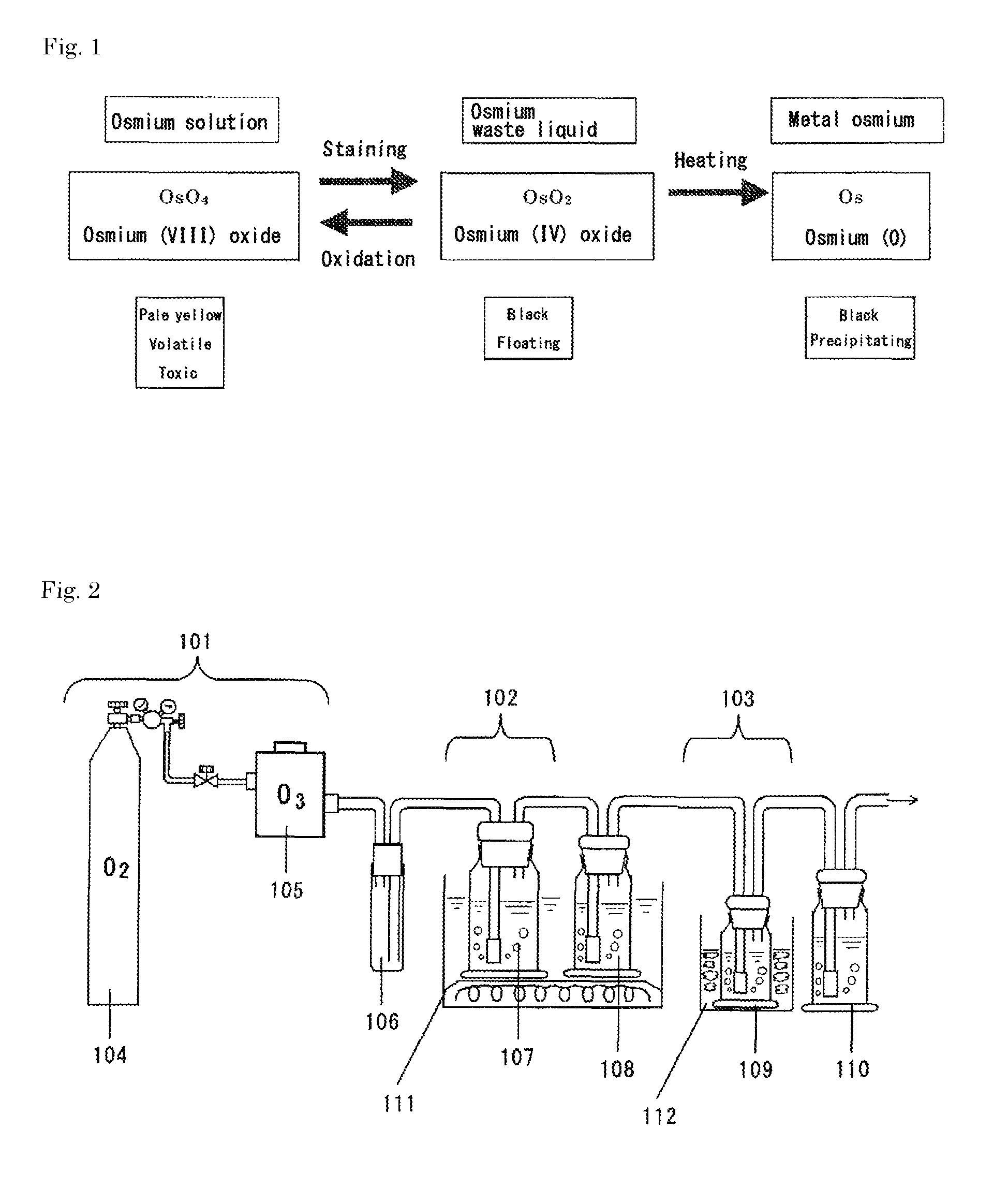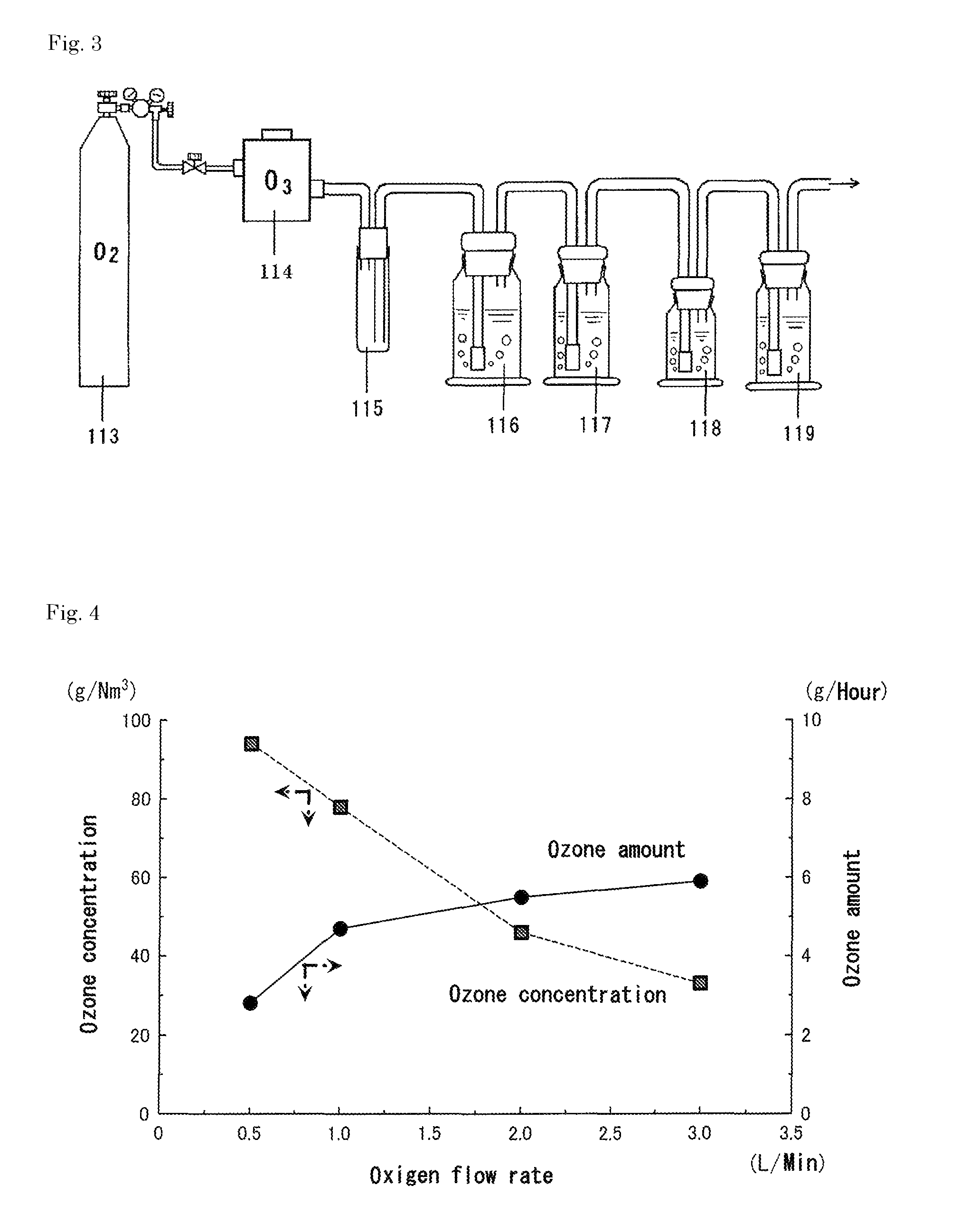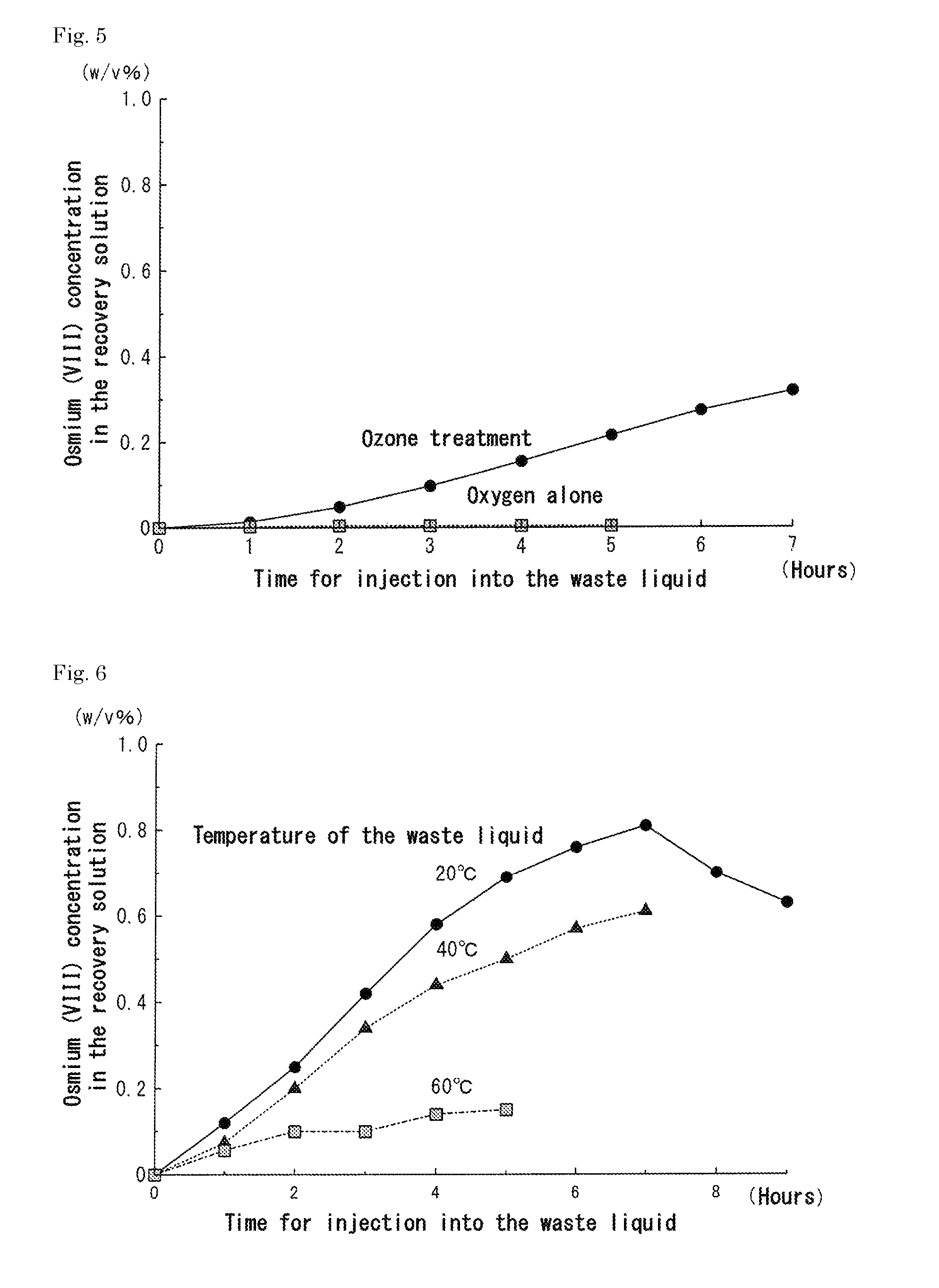Recovery of reusable osmium tetroxide
a technology of osmium tetroxide and reusable osmium tetroxide, which is applied in the direction of water/sewage treatment by oxidation, water/sludge/sewage treatment, chemical apparatus and processes, etc. it can solve the problems of toxic materials, osmium-containing waste liquid cannot be reused and has no other way, and the use of processed osmium cannot be achieved
- Summary
- Abstract
- Description
- Claims
- Application Information
AI Technical Summary
Benefits of technology
Problems solved by technology
Method used
Image
Examples
working examples
[0098]The concentration of osmium was measured through Working Examples 1 to 11 by the method described in Non-patent publication 5. Namely, samples were oxidized with potassium dichromate under sulfuric acid condition in and distilled, reacted with thiourea in sulfuric acid for colorization, and the absorbance was measured at 480 nm. Because this thiourea in sulfuric acid only reacts and forms color with osmium (VIII) oxide among osmium, samples were not distilled and directly reacted for colorization with thiourea in sulfuric acid when only osmium (VIII) oxide was measured.
[0099]The schematic diagram of the osmium (VIII) oxide production device used in Working Examples 1 to 10 is shown in FIG. 3. In Working Example 1 to 10, unless otherwise stated, following operation conditions are commonly used.
[0100]For waste liquid, osmium waste liquid discharged from sample preparation for electric microscopy was used directly. 300 ml of waste liquid was placed in the reactor. 70 ml of water ...
working example 1
Effects of Ozone as an Oxidant
[0102]Under the operation conditions as described above, a comparison was made between the case when ozone-containing oxygen made by the ozone generator was injected (hereinbelow referred to as “ozone-treated”) and the case when only oxygen was injected without using ozone generator. The concentration of osmium (VIII) oxide in the recovery solution over the time course of injection is shown in FIG. 5.
[0103]In the ozone-treated case, the concentration of osmium (VIII) oxide increased over the time course of injection into the waste liquid, confirming that osmium (VIII) oxide was recovered by ozone treatment. The wasted liquid turned from black to transparent, demonstrating a decrease in osmium content.
working example 2
Temperature of the Waste Liquid
[0104]Under the conditions in Working Example 1, the waste liquid was maintained at either 20° C., 40° C., or 60° C., each was ozone-treated to regenerate osmium (VIII) oxide. FIG. 6 shows osmium (VIII) oxide concentration in the recovery solution over the time course of ozone injection into the waste liquid.
[0105]The concentration of osmium (VIII) oxide in the recovery solution decreased with increasing the temperature of the waste liquid. Also, it was confirmed that osmium (VIII) oxide in the recovery solution tends to decrease after 7 hours even if the temperature of the waste liquid was at 20° C.
PUM
| Property | Measurement | Unit |
|---|---|---|
| temperature | aaaaa | aaaaa |
| temperature | aaaaa | aaaaa |
| concentration | aaaaa | aaaaa |
Abstract
Description
Claims
Application Information
 Login to View More
Login to View More - R&D
- Intellectual Property
- Life Sciences
- Materials
- Tech Scout
- Unparalleled Data Quality
- Higher Quality Content
- 60% Fewer Hallucinations
Browse by: Latest US Patents, China's latest patents, Technical Efficacy Thesaurus, Application Domain, Technology Topic, Popular Technical Reports.
© 2025 PatSnap. All rights reserved.Legal|Privacy policy|Modern Slavery Act Transparency Statement|Sitemap|About US| Contact US: help@patsnap.com



